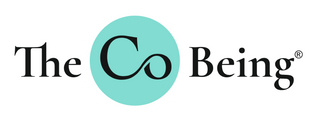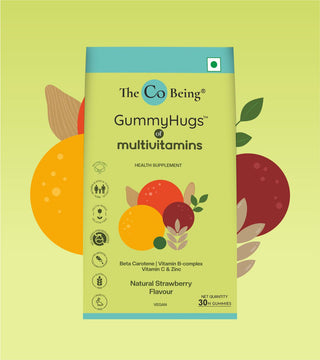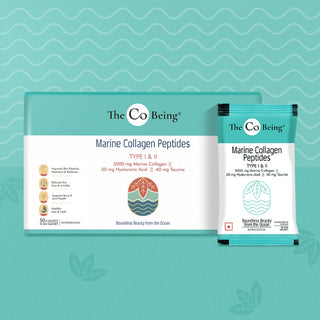Introduction | What is Iron Deficiency | Role of Iron in Women’s Health | Health Benefits of Iron | Top Iron-Rich Foods in India | A Quick and Delicious Recipe | Key Takeaways | Frequently Asked Questions
Introduction
Iron, the unsung hero of nutrition, plays a vital role in maintaining our overall health and vitality. The health benefits of iron include its responsibility for carrying oxygen throughout our bodies, supporting energy production, and bolstering our immune system. Iron benefits for skin and hair are also many in number.
However, deficiency of iron remains a global concern, making it crucial to ensure an adequate intake of this essential nutrient. In Vol 14. in the Clinical Epidemiology and Global Health journal, published in 2022, it was highlighted that anaemia affects around 24.8% of the global population.
So, let's embark on an expedition through some of the best antioxidant foods India has to offer. From fragrant spices to hearty lentils, and verdant greens to iron-rich fruits, India offers a bountiful array of culinary delights that can boost your iron levels and invigorate your overall health. Join us on a journey through the land of spices and discover the secret to vitality through the power of iron-rich foods in India.
What is Iron Deficiency
Before we jump into the iron-rich foods in India and some fun recipes, let’s first understand what iron deficiency is and the causes.
Iron deficiency is a common nutrition problem that can happen for various reasons. You might not be getting enough iron from your food, or your body might not be absorbing it properly. Sometimes, an increased need for iron can arise due to factors like rapid growth or frequent blood loss.
Why does iron matter so much? Well, it is super important for making haemoglobin, which helps carry oxygen around your body. When you don't have enough iron, it can lead to issues such as anaemia, feeling tired all the time, being weak, and even trouble thinking straight. It can mess with your immune system, how well you perform physically, and even how you grow, especially if you're a kid.
The key is catching and dealing with iron deficiency early on. That means making some changes to what you eat and including iron-rich foods in your diet. Additionally, consuming iron supplements can also help combat this. It's all about getting back to tip-top shape and feeling your best!
Now let’s take a look at some of the symptoms and the impacts of iron deficiency.
Iron Deficiency Symptoms
Iron deficiency can give rise to a range of symptoms that indicate an inadequate supply of iron in the body. These symptoms can vary from mild to severe and may include fatigue, weakness, pale skin, shortness of breath, impaired cognitive function, brittle nails, hair loss, and compromised immune function. By understanding the symptoms, individuals can take necessary steps to restore their iron levels and improve their overall well-being.
1. Inadequate Iron Intake: Insufficient consumption of iron-rich foods, such as lean meats, legumes, and leafy greens, can lead to iron deficiency.
2. Poor Iron Absorption: Certain factors, such as low stomach acid, gastrointestinal disorders, or consuming iron-blocking substances like tea or coffee with meals, can hinder iron absorption.
3. Increased Iron Requirements: During periods of rapid growth, pregnancy, or breastfeeding, the body requires more iron. Inadequate intake during these stages can result in iron deficiency.
4. Chronic Blood Loss: Frequent blood donation, heavy menstrual bleeding, gastrointestinal bleeding, or certain medical conditions can lead to chronic blood loss and subsequent iron deficiency.
Impact of Iron Deficiency
Iron deficiency has a significant impact on health and well-being. It can lead to anaemia, causing fatigue and weakness. Cognitive function may be impaired, while immune function and physical performance can also suffer. In children, it can affect growth and development. A few of the many impacts include:
1. Anaemia: Iron deficiency is a common cause of anaemia, resulting in reduced oxygen-carrying capacity in the blood. Symptoms may include fatigue, weakness, shortness of breath, and pale skin. Regular menstruation can contribute to the risk of developing anaemia in women due to the loss of iron-rich blood during the menstrual cycle.
2. Impaired Cognitive Function: Inadequate iron levels can affect cognitive abilities, leading to difficulties with concentration, memory, and overall cognitive performance. This is particularly crucial during early development, as infants with poor iron status may be at risk of experiencing long-term cognitive health challenges, potentially impacting their learning abilities and cognitive development.
3. Weakened Immune System: Iron deficiency can compromise immune function, making individuals more susceptible to infections and delaying recovery from illnesses. This is especially critical for children, as insufficient iron levels can impair their immune system development, increasing their vulnerability to frequent infections and potentially impacting their overall health and well-being.
Role of Iron in Women’s Health
Taking care of your iron levels is particularly important for women's health. During menstruation, women may experience blood loss, which can lead to decreased iron levels. It's essential to ensure an adequate iron intake to support healthy energy levels, prevent fatigue, and maintain overall well-being.
For women with Polycystic Ovary Syndrome (PCOS), managing iron levels becomes even more crucial. PCOS is a hormonal disorder that can cause irregular periods and heavy bleeding when menstruation does occur. This can contribute to iron deficiency. By focusing on a balanced diet and considering iron-rich foods, women with PCOS can support their iron levels and promote optimal health.
Health Benefits of Iron
There are a plethora of health benefits of iron for the body. Right from improving energy levels to boosting skin and hair health, iron has something for all facets! Let’s take a look at some of the many:
1. Fight Anaemia
Anaemia, which causes fatigue and weakness, is a common health issue in India, especially for women and children. Good news is, we can try to prevent and treat it! Including iron-rich foods like spinach (palak), fenugreek leaves (methi), and amaranth (chaulai) in our diet does wonders. These green leafy veggies boost our iron levels, improve red blood cell production, and help us feel energised and strong.
2. Revitalise and Banish Fatigue
Feeling tired and weak? Iron can come to the rescue! Haemoglobin, the superhero protein, needs iron to carry oxygen all over your body. Boost your energy levels and bid farewell to fatigue by including foods rich in iron like lentils, spinach, dates, and lean meats such as chicken and fish in your diet. With improved oxygen transport, you'll be unstoppable, full of vitality, and ready to conquer the day!
3. Unlock Hair and Skin Health
Iron benefits for hair and skin by facilitating luscious locks and glowing skin! It helps deliver oxygen to hair follicles and skin cells, promoting their growth and rejuvenation. Don't let iron deficiency dampen your beauty vibe with hair loss and dull skin. Embrace a nourishing diet packed with iron-rich treats like sesame seeds, lentils, jaggery (gud), and dark chocolate. The Co Being’s HSN+ created with highly beneficial ingredients including Iron, Zinc, Hyaluronic Acid, etc. helps rejuvenate skin and tackles hair loss efficiently.
4. Boost Your Immune System
Iron is like a secret weapon for your immune system! Foods like chickpeas, tofu, pumpkin seeds, and quinoa, which are rich in iron, can supercharge your body's defence against infections and diseases. They help produce and activate those mighty white blood cells that keep you healthy and strong.
The Co Being’s Iron++ Gummyhugs is a delicious peach-flavoured supplement jampacked with the many benefits of iron including improving cellular health, boosts stamina levels, and prevents fatigue.
Top Iron-Rich Foods in India
When it comes to boosting your iron intake, India is a treasure trove of delicious and nutritious options. These iron-rich foods not only satisfy your taste buds but also provide the essential nutrient your body craves. From traditional staples to flavorful ingredients, let's explore the top iron-rich foods in India that can fuel your health and well-being.
1. Lentils and Legumes
Lentils such as masoor dal, toor dal, and moong dal are the best iron food sources that provide a healthy dose of essential minerals.
2. Spinach
This vegetable high in iron is also an excellent source of other essential nutrients such as vitamins A and C.
3. Fenugreek Leaves
Also known as methi, fenugreek leaves are the best iron food source and are widely used in Indian cooking, particularly in curries and parathas. Alongside iron, fenugreek leaves provide a good amount of fibre, calcium, magnesium, and other beneficial compounds that support overall well-being.
4. Amaranth
This protein-rich grain is not only a great source of iron but also offers dietary fibre and other valuable nutrients.
5. Jaggery
A natural sweetener derived from sugarcane, jaggery contains iron in a more easily absorbable form, making it a popular choice in Indian sweets and desserts.
6. Garden Cress Seeds
These tiny seeds, known as Halim or Aliv, are powerhouses of iron and are often used in chutneys, salads, and garnishes.
7. Sesame Seeds
Widely used in Indian cuisine, sesame seeds are a good source of iron and can be sprinkled on salads, added to chutneys, or used as a seasoning.
8. Tofu
A versatile soy-based product, tofu is not only a valuable source of plant-based protein but also contains iron, making it an excellent choice for iron-rich food for vegetarians and vegans.
9. Cashews
These iron-rich dry fruits are not only a rich source of healthy fats but also contain iron, making them a tasty and nutritious snack.
10. Raisins
Raisins, made by drying grapes, are one of the iron-rich dry fruits that contain a moderate amount of iron in it. A 1/2 cup serving of raisins typically offers approximately 1.5 milligrams of iron.
11. Mulberries
Mulberries are small and sweet fruits high in iron. These iron-rich fruits provide about 1.85 milligrams of iron per 100 grams.
A Quick and Healthy Recipe!
Iron-rich recipe of Quinoa Lentil Salad with Spinach and Mango
Experience a vibrant and nourishing delight with the iron-rich quinoa lentil salad with spinach and mango. This colourful ensemble combines a variety of flavours, textures, and essential nutrients for a truly satisfying experience. With protein-packed quinoa as the base, iron-rich lentils, and the refreshing addition of vegetable high in iron like spinach, this iron-rich recipe is a culinary celebration of health and taste. Indulge in a symphony of colours and nutrients that will invigorate your senses. The lentils and spinach contribute their iron-rich properties, while quinoa provides protein and fibre. The mango adds a delightful touch of sweetness, perfectly complementing the savoury elements. Discover a delicious way to incorporate the benefits of iron into your diet while savouring a delightful culinary experience.
Ingredients
- 1 cup quinoa
- 1 cup cooked lentils (such as masoor dal or toor dal)
- 2 cups fresh spinach leaves, chopped
- 1 ripe mango, diced
- 1 small red onion, finely chopped
- 1/4 cup fresh cilantro leaves, chopped
- 1/4 cup roasted peanuts, crushed
- Juice of 1 lemon
- 2 tablespoons olive oil
- 1 teaspoon cumin powder
- Salt and pepper to taste
Instructions:
- Rinse the quinoa thoroughly under cold water. Cook it according to the package instructions, using water or vegetable broth.
- In a large mixing bowl, combine the cooked quinoa, lentils, chopped spinach, diced mango, red onion, and cilantro.
- In a separate small bowl, whisk together the lemon juice, olive oil, cumin powder, salt, and pepper to make the dressing.
- Pour the dressing over the quinoa lentil mixture and toss well to combine, ensuring all ingredients are evenly coated.
- Let the salad sit for about 15 minutes to allow the flavours to meld together.
- Before serving, sprinkle the crushed roasted peanuts on top for added crunch and texture.
Enjoy this refreshing and nutrient-packed salad as a light meal or side dish, providing a balance of iron, protein, and other essential nutrients.
Key Takeways
In summary, iron is essential for haemoglobin production, immune function, and overall growth. Including iron-rich foods like spinach, lentils, tofu, chickpeas, and sesame seeds in our diet is crucial for maintaining optimal iron levels. By ensuring sufficient iron intake, we can boost energy, vitality, and prevent conditions like anaemia. Let's prioritise iron-rich foods to support our overall well-being.
Frequently Asked Questions
1. Which vegetable is high in iron?
Several vegetables are high in iron. Some notable examples of which vegetable is high in iron include spinach, kale, broccoli, Swiss chard, beet greens, and Brussels sprouts.
2. How much content of iron is in raisins?
The content of iron in raisins can vary slightly depending on the brand and specific variety. On average, a 1.5-ounce (42.5g) serving of raisins provides approximately 0.8-1.3 milligrams of iron, which can contribute to your overall iron intake.
3. How much of the content is iron in pomegranate?
Pomegranate is not considered a significant source of iron. The content of iron in pomegranate is relatively low compared to other iron-rich foods in India. On average, a 100-gram serving of pomegranate seeds contains approximately 0.3 milligrams of iron. While it contributes some iron to the diet, it is not a primary source for meeting daily iron requirements.
4. How much of the content is iron in strawberries?
Strawberries are not a particularly high source of iron. On average, a 100-gram serving of strawberries contains approximately 0.4 milligrams of iron. The content of iron in strawberries is relatively low compared to other iron-rich foods in India, it offers various other nutritional benefits, such as vitamin C, fibre, and antioxidants.
5. What causes anemia with iron deficiency?
Anemia with iron deficiency can be caused by various factors, including insufficient dietary intake of fruits high in iron, chronic blood loss (e.g., from heavy menstrual periods or gastrointestinal bleeding), pregnancy or breastfeeding, certain medical conditions that interfere with iron absorption, or increased iron requirements during periods of rapid growth (such as in infants and adolescents).
6. What are the best foods for iron deficiency?
Including these iron-rich foods in India in your diet is crucial for addressing iron deficiency. Some of the best foods for iron deficiency include red meat, poultry, seafood (such as oysters and clams), organ meats (like liver), legumes (such as lentils and chickpeas), tofu, spinach, kale, broccoli, fortified cereals, quinoa, nuts and seeds (like pumpkin seeds and sesame seeds), and dried fruits (such as raisins and apricots).
7. What are some of the iron-rich foods for vegetarian people?
There are several iron-rich foods that are suitable for vegetarians. These include legumes (such as lentils, chickpeas, and kidney beans), tofu, tempeh, soybeans, quinoa, fortified cereals, spinach, kale, broccoli, pumpkin seeds, sesame seeds, dried fruits (like apricots and raisins), and dark chocolate.
So Go Ahead and Explore All That The Co Being has to offer for your Wellness Needs!



